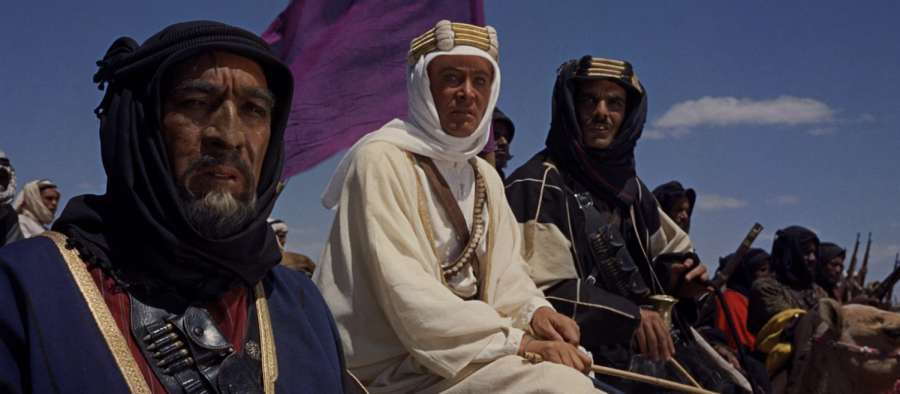Orientalism in the Cinematic Landscape
Photo By: IMDb
Lawrence of Arabia (1962)
Misrepresentation of any form, be it through stereotype or blatant racism, is more prevalent today than it has ever been. Nearly every medium – literature, art, even music – offers false perceptions of the “other”; however, the cinematic landscape has proven to be the primary source of generalizations through both film and television. The most substantial form of these misrepresentations in film exists in what is called Orientalism.
Coined by renowned Palestinian scholar Edward Said in 1978, Orientalism refers to, “the basic distinction between East and West as the starting point for elaborate theories, epics, novels, social descriptions, and political accounts concerning the Orient, its people, customs, ‘mind,’ destiny and so on.” In other words, Orientalism is the West’s essential misrepresentation and preconception of the East and is often found in popular media.
A prominent aspect of ‘cinematic Orientalism’ is the imaginative and heavily romanticized geography of the Middle East. David Lean’s Lawrence of Arabia (1962) is a brilliant example of this. Lean’s highly regarded film tells the story of T.E. Lawrence’s expedition to Arabia during World War I. Famous for its grand scale and timeless cinematography, the majority of the shots in Lawrence of Arabia consist of a great, exotic desert land stretching as far as the eye can see; our protagonist has entered another world. The film’s dramatic exoticism puts audiences in awe, presenting them with an overly exaggerated concept of what the Middle East is. Even today, many Western audiences immediately think of an enormous, never-ending desert as soon as they think of the mere term, ‘Middle-East’.
The geographical misrepresentation of the Orient can also be found in films such as Disney’s Aladdin (1992) and Steven Spielberg’s Raiders of the Lost Ark (1981). Both of these films mysticize the region as being remarkably different from the West and detached from its culture and developments, and is often used as a decorative backdrop for which the protagonists could navigate. It’s also prevalent in Asia-centric films such as Wes Anderson’s Isle of Dogs (2018), a film that uses its Japanese setting to show off impressive and colorful stop-motion animation.
A similar fantasy exists in the representation of the Orient’s people as well. From the rageful Arab man to the submissive Arab woman, popular culture tends to resort to one or the other in depicting people of the Oriental region. Aladdin’s Jafar and Jasmine are prime examples of the character types often abused by the media. Most notably, Arab actors are very prone to be cast as small-role terrorists in mainstream blockbuster films, as seen in Iron Man (2008), John Wick: Chapter 3 (2019), and many more.
Orientalism for the sake of romantic fantasy is the most obvious type of cinematic Orientalism, but what is often ignored are Orientalist implications. A relevant example is Denis Villeneuve’s Dune (2021). Despite Frank Herbert’s original novel being an anti-imperialist satire, Villeneuve’s film feels so grounded and narratively driven to where its imperialist implications feel almost imitative of real-life. It’s an essentialized retelling of Lawrence of Arabia, with a white protagonist whose goal is to bridge his political devotions to his seemingly ethical obligation to the indigenous people of an estranged desert planet.
It neither evokes satire nor does it imply self-awareness; it is a product of cognitive dissonance between the spectator and the subject.
I feel as if the general public’s largely skewed perception of the Orient is a direct result of its misrepresentation in the media. Cinematic Orientalism doesn’t demonstrate contemporary flaws among the average movie-goer; rather, it proves that after all this time, the medium has learned nothing.



